 Thomas Jefferson’s name gets bandied about quite frequently on the fourth of July. Famously linked to this date first for his role in writing the Declaration of Independence, Jefferson also made history by dying on July 4th fifty years later…the exact same day as his Declaration co-author and former political adversary John Adams.
Thomas Jefferson’s name gets bandied about quite frequently on the fourth of July. Famously linked to this date first for his role in writing the Declaration of Independence, Jefferson also made history by dying on July 4th fifty years later…the exact same day as his Declaration co-author and former political adversary John Adams.
So, on this our country’s 236th birthday, Intrepid Pup shares a recent visit to Thomas Jefferson’s hilltop home of Monticello.
Thomas Jefferson (1743-1826) was a young nation’s first Secretary of State, second Vice President, and third President…a veritable trifecta that meant he was indeed a busy man whose home—despite being started in 1768—took forty years to complete. Today, the distinctive plantation with its Palladian architectural influences is the only U.S. residence that’s also a designated UNESCO World Heritage site.
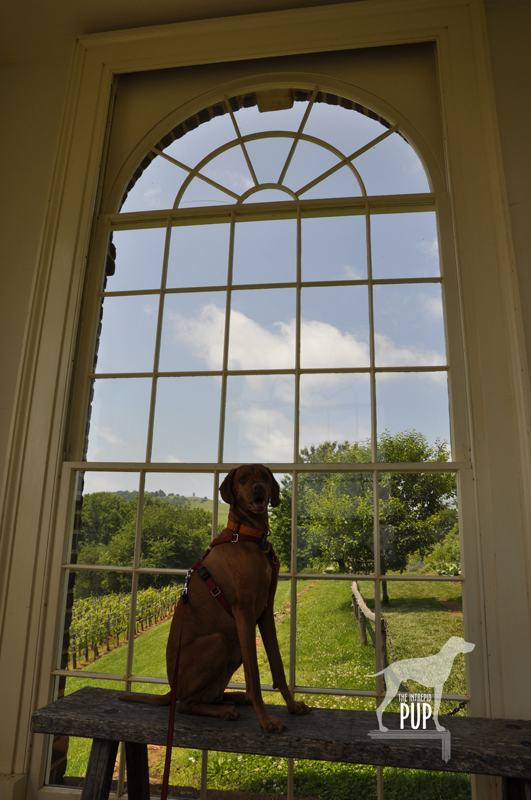
Tavish overlooks Jefferson’s gardens from the airy pavilion, much as Bergère and her progeny might have done more than 200 years ago.
Historians are always quick to cite Jefferson’s intellect and endless fascinations: natural history, architecture, gardening, cooking, viticulture, farming, literature, politics. But dogs? This founding father seemed to take a purely utilitarian view—not uncommon in late 18th-century America—of the canine species. Jefferson opined that, in general, the dog population should be highly controlled (and even regulated and taxed) as dogs often proved to be carriers of disease and a scourge upon livestock. A comprehensive article on this topic appears in the “Thomas Jefferson Encyclopedia” section of Monticello’s website.
That all being said, Jefferson also felt that certain birds and animals from the Old World should be introduced to America. Among these was a “shepherd’s dog,” and Jefferson took it upon himself to import three such dogs from France (a female named Bergère and two puppies she whelped during the trans-Atlantic passage) in 1789. There’s been much speculation as to just what kind of herding dogs these were, since Jefferson’s archival records lack this particular detail. The experts’ best guess? Large Briards. Jefferson’s farm animals included sheep, cows, and various poultry, and it seems that Bergère et al were kept as true working dogs. More of the “chien de berger” came to Monticello in 1790 and 1809, with the latter dogs personally selected by the Marquis de Lafayette! As Albemarle County landowners increasingly acquired sheep, Jefferson’s dogs came into high demand, and correspondence indicates that he carefully bred his dogs and supplied the puppies to relatives, friends and neighbors.
Bergère’s happy—but, presumably, purely coincidental—legacy is that Monticello remains a dog-friendly destination. So long as you keep your dog leashed and outdoors, dogs are welcome to explore Monticello’s historic grounds.
Dogging the Details
 38°0′35.34″N, 78°27′9.85″W
38°0′35.34″N, 78°27′9.85″W
Monticello, Charlottesville, Virginia
For Monticello’s pet-friendly culture and sheer number of things to see and do, this excursion ranks a “2” on the Intrepid Pup’s wag-a-meter.
Your visit will begin in the parking lot. Don’t miss seeing the African-American graveyard. It’s near the picnic area and entrance to the 2-mile Saunders-Monticello Trail (important note: dogs are permitted only on the section that runs through Kemper Park at the opposite end of the trail). From the parking lot you’ll approach the Visitor Center for your tickets. There’s a theater showing a 20-minute introductory film, an educational center, a cafe, and a well-stocked museum shop (sorry, no dogs in any of the buildings). Though your dog also can’t accompany you into the Robert H. and Clarice Smith Gallery, you’ll want to check this out, too. This compact museum space addresses diverse themes—from slavery to Monticello’s design—and tackles abstract concepts like Jefferson’s words and ideas in a creative way: see for yourself!
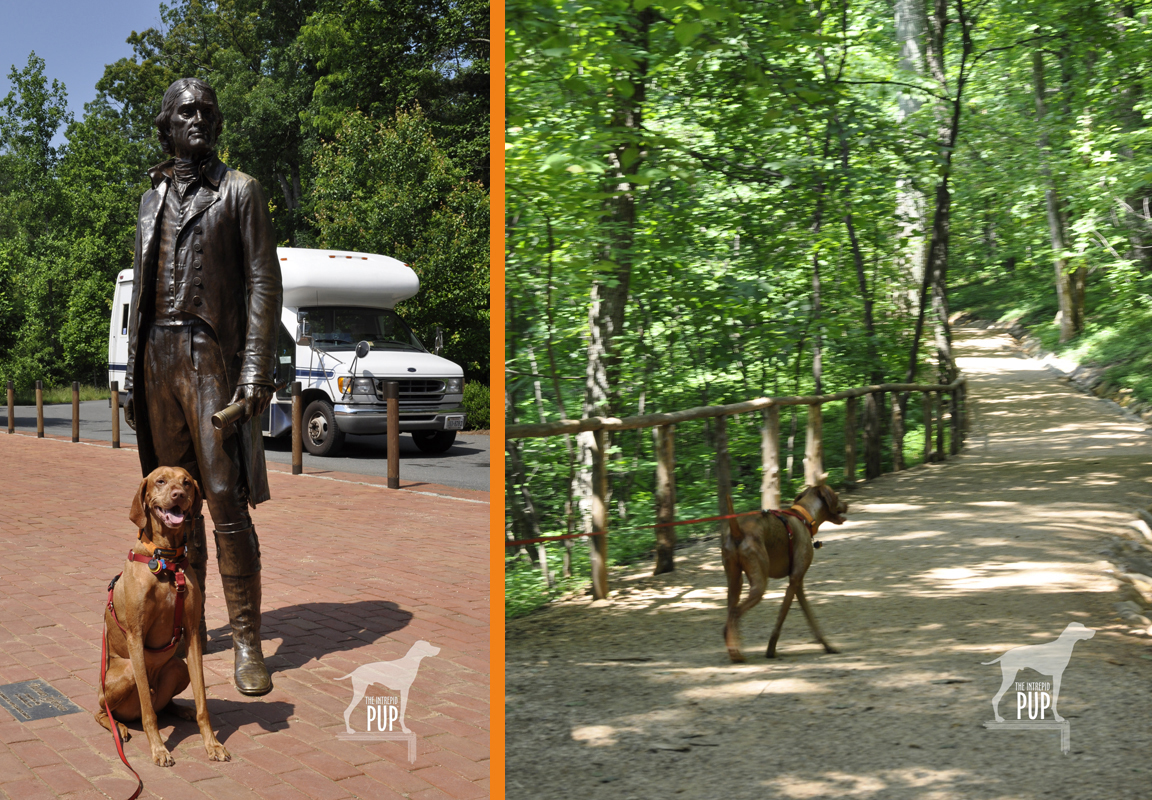
Dogs can’t take the shuttle (left), but the walking trail (right) begins just across the road from the Visitor Center shuttle stop.
To cover the distance between the Visitor Center and the house with your dog, you won’t be able to ride the courtesy shuttle. Not to worry: there’s a gently sloping, shady 0.6-mile gravel path through the woods that only takes ~20 minutes. Allow more time if you stop to linger en route at Jefferson’s gravesite.
We were pleased to find trash receptacles placed throughout the grounds (though not on the woodland trail), and we were conveniently able to refill water bottles for Tavish from restroom facilities and from the drinking fountain at the Museum Shop adjacent to Jefferson’s extensive vegetable garden.
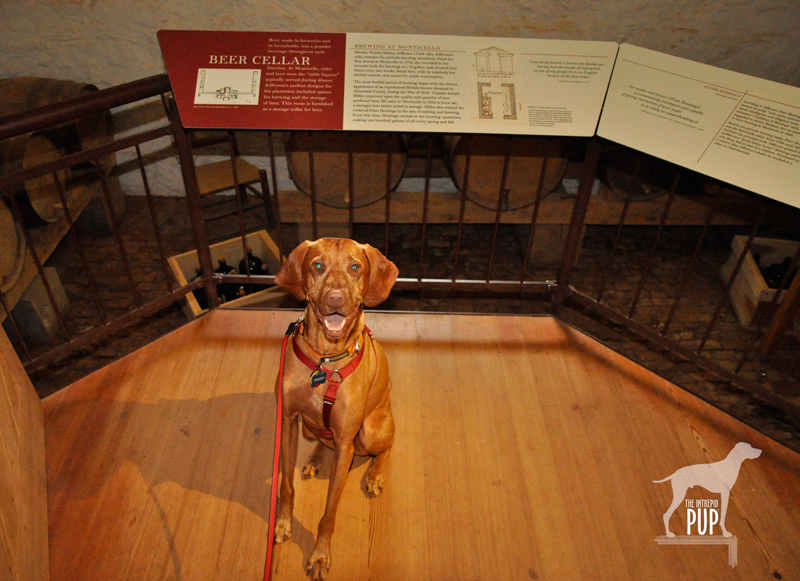
Tavish cools off in Monticello’s beer cellar. Jefferson’s wife Martha (1748-1782) oversaw the brewing of 15-gallon batches every two weeks. A British brewer visited Monticello in 1813–due to being detained in the War of 1812!–and, based on his input, the estate switched to producing biannual 100-gallon runs of ale.
Since dogs aren’t allowed inside the main house, Team Tavish took the timed-entry guided tour in consecutive one-hour shifts. This meant that Tavish had a full two hours to explore Jefferson’s estate, and there really was plenty to hold his (and our) interest. We’d been informed that Tavish could accompany us on any of the seasonally-offered “gardens and grounds” tours included in the general admission fee. While we saw many of these in progress, we opted to explore on our own and even encountered a few other visiting dogs. The beautiful flower beds on the west lawn were in full bloom, and from the north terrace we could just make out in the distance the Jefferson-designed rotunda at the University of Virginia. We surveyed the orchards from the vantage point of the garden pavilion. And when we needed some shade, we took a self-guided tour through the cool cellar passage that runs the full width of the main house and terraces and gives you a peek at Monticello’s dependencies .
Plan on spending a minimum of 3 hours at Monticello to savor the history and the views!

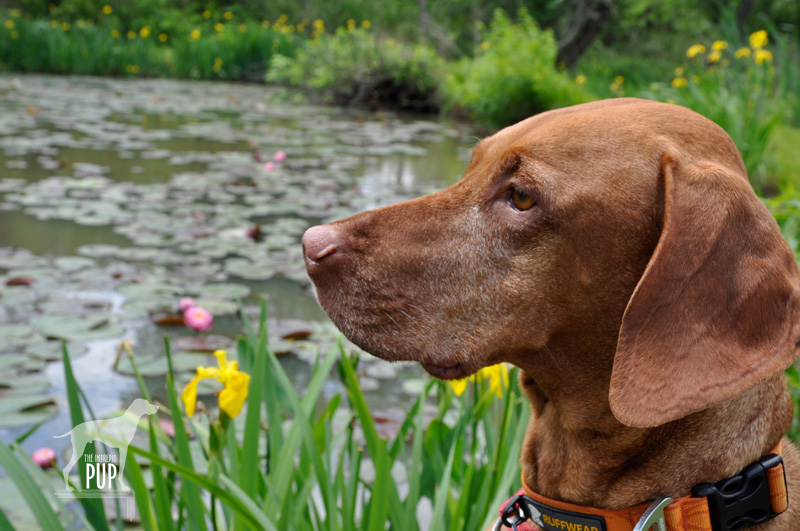
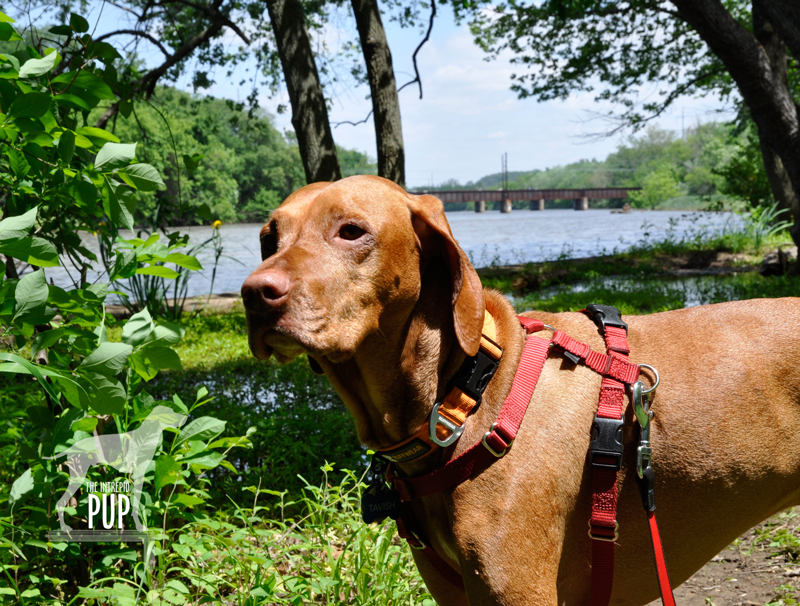
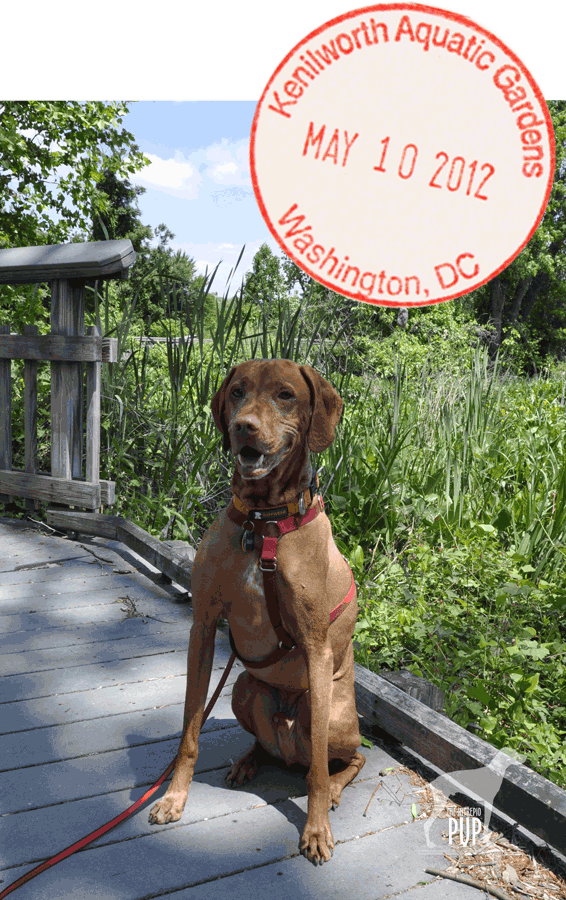
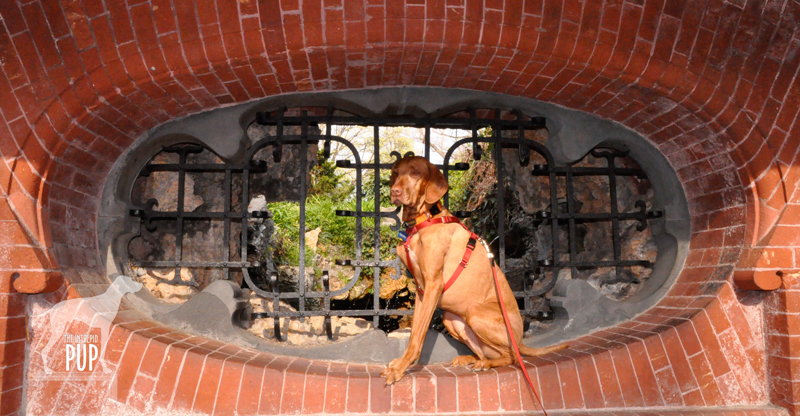
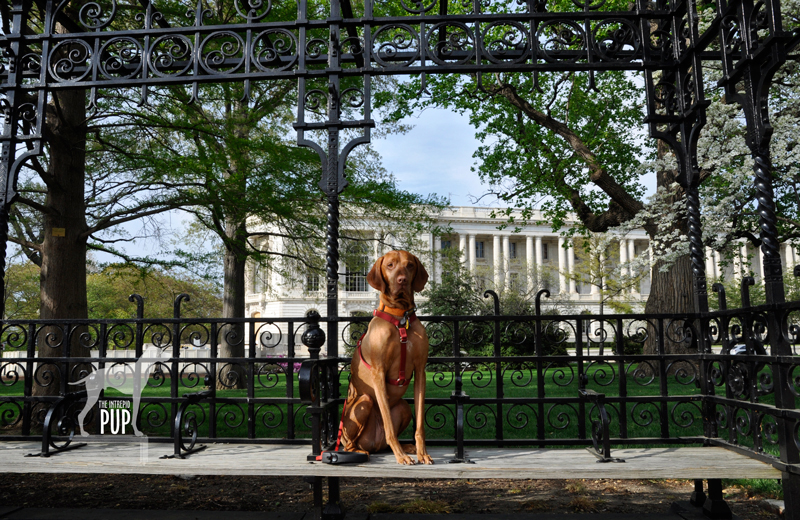

 Yonder’s
Yonder’s 









 Just in time for Presidents’ Day is this week’s
Just in time for Presidents’ Day is this week’s  to U.S. president Gerald Ford from Ford’s daughter and the White House photographer.
to U.S. president Gerald Ford from Ford’s daughter and the White House photographer.
